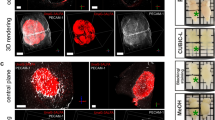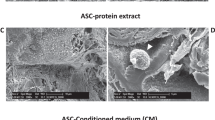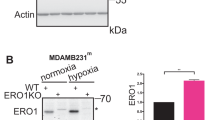Abstract
Tumour cells exposed to hypoxia in vitro can show increased expression of several selected genes, including the gene encoding the vascular endothelial growth factor (VEGF), suggesting that hypoxia followed by reoxygenation might promote the malignant progression of tumours. An in vitro/in vivo study was conducted to investigate whether hypoxia can increase the angiogenic potential of tumour cells through increased VEGF secretion. Four human melanoma cell lines (A-07, D-12, R-18, U-25) were included in the study. Cell cultures were exposed to hypoxia (oxygen concentration <10 p.p.m.) in vitro using the steel chamber method. Rate of VEGF secretion was measured in vitro in aerobic and hypoxic cell cultures by ELISA. Angiogenesis was assessed in vivo using the intradermal angiogenesis assay. Aliquots of cells harvested from aerobic cultures or cultures exposed to hypoxia for 24 h were inoculated intradermally in the flanks of adult female BALB/c-nu/nu mice. Tumours developed and angiogenesis was quantified by scoring the number of capillaries in the dermis oriented towards the tumours. The number of tumour-oriented capillaries did not differ significantly between tumours from hypoxic and aerobic cultures for A-07 and U-25, whereas tumours from hypoxic cultures showed a larger number of tumour-oriented capillaries than tumours from aerobic cultures for D-12 and R-18. The VEGF secretion under aerobic conditions and the absolute increase in VEGF secretion induced by hypoxia were lower for D-12 and R-18 than for A-07 and U-25, whereas the relative increase in VEGF secretion induced by hypoxia was higher for D-12 and R-18 than for A-07 and U-25. VEGF is not a limiting factor in the angiogenesis of some tumours under normoxic conditions. Hypoxia can increase the angiogenic potential of tumour cells by increasing the secretion of VEGF, but only of tumour cells showing low VEGF secretion under normoxia. Transient hypoxia might promote the malignant progression of tumours by temporarily increasing the angiogenic potential of tumour cells showing low VEGF expression under normoxic conditions.
This is a preview of subscription content, access via your institution
Access options
Subscribe to this journal
Receive 24 print issues and online access
$259.00 per year
only $10.79 per issue
Buy this article
- Purchase on SpringerLink
- Instant access to full article PDF
Prices may be subject to local taxes which are calculated during checkout
Similar content being viewed by others
Author information
Authors and Affiliations
Rights and permissions
About this article
Cite this article
Rofstad, E., Danielsen, T. Hypoxia-induced angiogenesis and vascular endothelial growth factor secretion in human melanoma. Br J Cancer 77, 897–902 (1998). https://doi.org/10.1038/bjc.1998.148
Issue date:
DOI: https://doi.org/10.1038/bjc.1998.148
This article is cited by
-
Tumour hypoxia promotes melanoma growth and metastasis via High Mobility Group Box-1 and M2-like macrophages
Scientific Reports (2016)
-
TNF-alpha and melphalan-based isolated limb perfusion: no evidence supporting the early destruction of tumour vasculature
British Journal of Cancer (2015)
-
A microfabricated platform for establishing oxygen gradients in 3-D constructs
Biomedical Microdevices (2013)
-
Vascular endothelial growth factor regulates melanoma cell adhesion and growth in the bone marrow microenvironment via tumor cyclooxygenase-2
Journal of Translational Medicine (2011)
-
The tumor microenvironment and metastatic disease
Clinical & Experimental Metastasis (2009)



